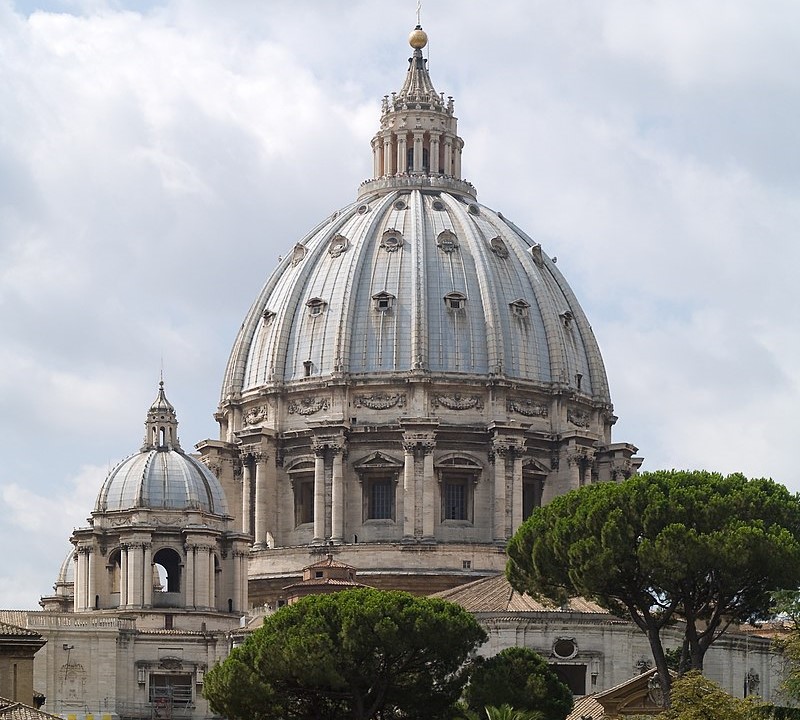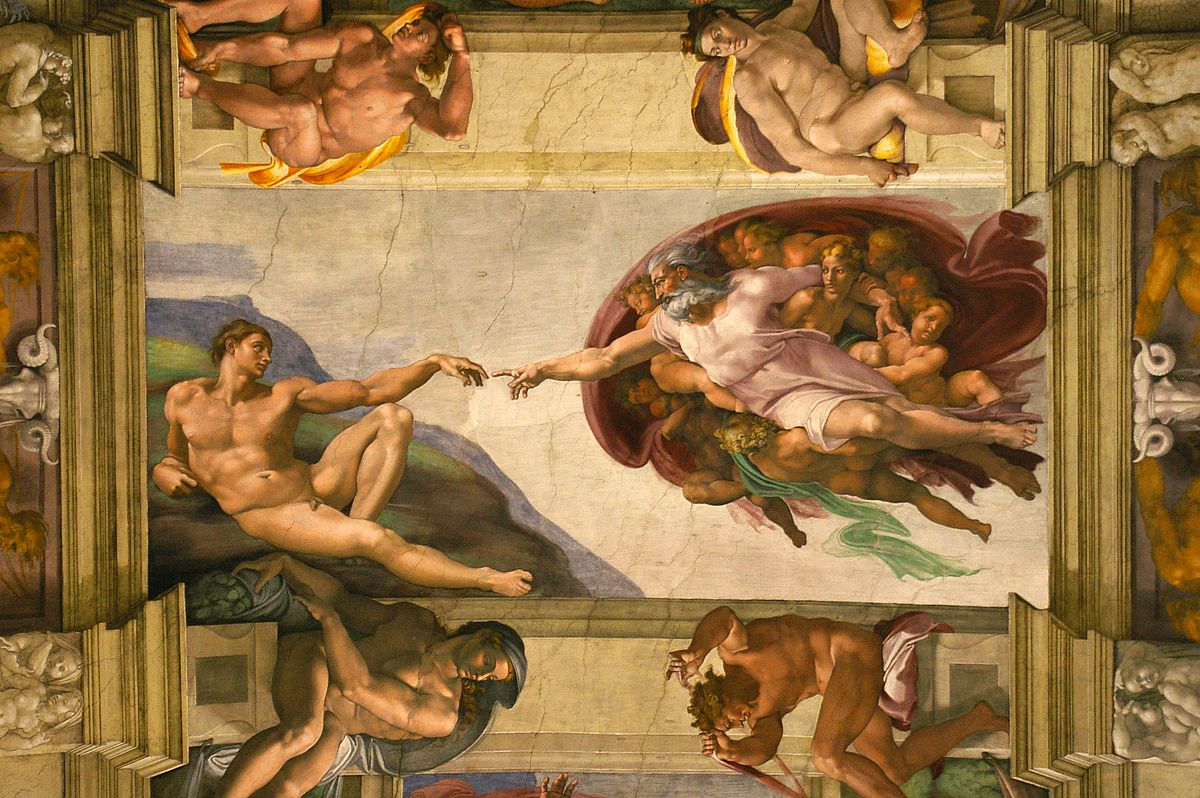
When the Vatican appointed the great sculptor, painter, and architect Michelangelo to rebuild St. Peter’s Basilica in Rome, he wanted it to be on a Greek Cross plan.
Specifically, Michelangelo envisioned the emblematic basilica to have a much larger dome so it could be seen from afar, along with a more sizeable rostrum and cross.
It was 1546 when Pope Paul III asked the great artist to undertake the giant project. Works had begun forty years earlier but with limited results. The five predecessors involved had different plans, and the church that was originally built by Constantine the Great in the fourth century ended up looking like Roman ruins.

Michelangelo agreed to redesign the basilica under two conditions. Firstly, he would not receive any compensation for his work, and, secondly, the basilica would be rebuilt on a Greek Cross plan. His vision was for St. Peter’s to have the tallest dome in the world, specifically 448 feet (136.5 meters) high from ground to top.
Greek-cross plan is characterized by a church design that takes the shape of a Greek cross, featuring a square central mass and four arms of equal length. This architectural layout found extensive use in Byzantine architecture and served as inspiration for Western churches influenced by Byzantine design principles.
The sheer size of the basilica made the project daunting. Yet, St. Paul’s Basilica was the center of Christendom at the time. According to the Church, it was the site of the burial of St. Peter. It deserved to be the grandest construction of its time.
Michelangelo takes over from Bramante
Donato Bramante was Michelangelo’s predecessor. He was appointed by Pope Julius II in 1506 to demolish the old church built by Constantine and rebuild it. This was an ambitious project that Bramante undertook with great zeal.
It was the architect’s idea to rebuild St. Paul’s in the shape of a Greek Cross enclosed by a square with an enormous dome over the center. He also envisioned smaller domes and half-domes radiating outwards. Bramante began the huge project, and, when he died, Rafael took over as chief architect.
In turn, Michelangelo took over after the passing of Raphael and made changes to Bramante’s Greek Cross plan, emphasizing a central dome and creating a much more symmetrical design.
Michelangelo’s revisions added imposing exterior masonry, making the basilica look like a grand monument. Instead of Bramante’s enclosed Greek Cross, Michelangelo filled in each corner with stairwells or small vestries, creating a continuous wall surface. Furthermore, he designed Corinthian pilasters set at varied angles. These had the effect of providing a dynamic form to the structure.
His grand design was meant to give St. Peter’s Basilica the look of an awe-inspiring monument. Ultimately, Michelangelo’s dome and Greek Cross plan are the architectural elements that made the basilica the awe-inspiring monumental Christian church that has withstood time.
Michelangelo’s work on St. Peter’s Basilica
Initially, Michelangelo was reluctant to take over such an ambitious task. In one of his writings found later, he said, “I undertake this only for the love of God and in honor of the Apostle.”
Michelangelo took over the construction of St. Peter’s and requested complete artistic freedom to complete the project as he saw fit. His ideas, designs, and implementation finally made him the primary designer of the basilica as it stands to this day.

The idea of a large dome was inspired from both ancient Rome and Renaissance Italy. A century earlier, Filippo Brunelleschi, one of the founders of the Renaissance, had built the imposing dome of the Florence Cathedral. Architects who worked on St. Peter’s Basilica were inspired by the work of Brunelleschi.
Michelangelo adopted ideas from previous architects and produced his own visionary design with his distinctive touch and all subsequent plans. The eastern end of the new St. Peter’s Basilica with its monumental dome was the centrifugal point of Michelangelo’s work and his most distinct contribution. To this day, the dome remains the tallest of its kind in the world. The architect passed away prior to its completion and only witnessed the implementation of the base of the dome, called the Tamburo.
In 1564, Michelangelo passed away at the age of eighty-eight. His work on the basilica was intended to continue unaltered. His assistant Jacopo Barozzi da Vignola was left to carry on the work in his place. The reigning Pope, Pius V, assigned Giorgio Vasari to ensure that he complete the work as Michelangelo had intended.
See all the latest news from Greece and the world at Greekreporter.com. Contact our newsroom to report an update or send your story, photos and videos. Follow GR on Google News and subscribe here to our daily email!



